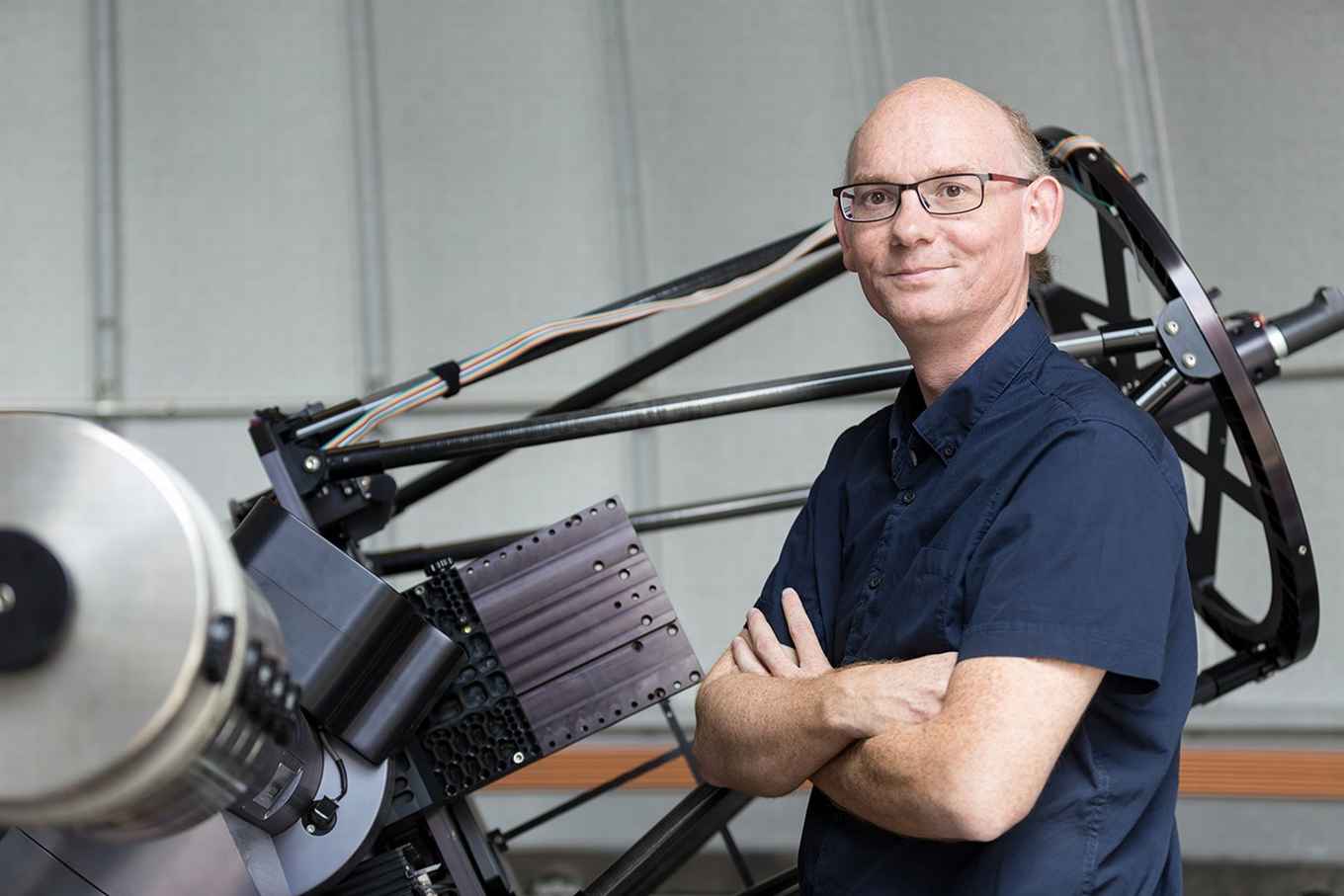Rudy Wijnands, professor of Observational High-Energy Astrophysics
18 September 2017

Extreme physics
Rudy Wijnands studies the fundamental and extreme physical processes that occur in and around neutron stars and black holes. He does so by examining how these extremely compact and relativistic objects react to the accretion, or trapping, of matter by gravity. Wijnands developed his own branch of research to study the inside of neutron stars, looking at how these stars cool once they have been heated by the accreted matter. Wijnands’ long-term goal is to understand the accretion processes involved and the behaviour of matter at extreme densities, as encountered in neutron stars. For the purposes of his research, he is using data obtained with the aid of the largest telescopes in space and on earth.
Wijnands is also a lecturer of the Bachelor’s and Master’s programmes in Physics and Astronomy. In particular, he takes care of the practicals and supervises graduation projects drawing on observations made by the students using the telescopes at the Anton Pannekoek Observatory, which is associated with the API and is sited on the roof of Science Park 904.
In the capacity of professor, Wijnands will be focusing on neutron stars and black holes that accrete matter at a rate 1,000 to up to 10,000 times more slowly than what is typically observed in common systems. Objects accreting matter this slowly have not yet been subjected to comprehensive study, but they offer new and important opportunities to better understand the accretion processes and the inside of neutron stars. In addition to conducting his observation programmes, Wijnands will also be focusing on the theoretical aspects of these processes.
About Wijnands
Wijnands has been affiliated with the UvA’s Anton Pannekoek Institute for Astronomy since 2004, and since 2008 in the capacity of associate professor. He has been in charge of the Anton Pannekoek Observatory since 2014. In 2002, he was appointed St Andrews Research and Teaching Fellow in Astronomy, and subsequently, in 2003, PPARC Advanced Fellow, at the University of St Andrews in Scotland.
In 1999 Wijnands completed his PhD in Astronomy at the UvA. He was awarded the Andreas Bonn Medal from the Society for the Promotion of Physics, Medicine and Surgery for his doctoral research work in 1998. After obtaining his PhD, Wijnands was awarded a Chandra Fellowship to carry out research at the Center for Space Research (now the Kavli Institute for Astrophysics and Space Research) of the Massachusetts Institute of Technology, Cambridge (US).
Wijnands has published in excess of 250 articles in scientific journals, including Nature, Science, Astronomy & Astrophysics, The Astrophysical Journal and the Monthly Notices of the Royal Astronomical Society. During his appointment at the UvA, Wijnands has received a variety of research grants, such as a Starting Grant from the European Research Council (2008) and various subsidies from the Netherlands Organisation for Scientific Research (NWO), including an open competition subsidy in 2005 and a TOP1 subsidy for Exact Sciences in 2014. In 2006, he was awarded the Bruno Rossi Prize from the American Astronomical Society, one of the most prestigious prizes in high-energy astrophysics, for his discovery of coherent pulsations in low-mass X-ray binary stars.